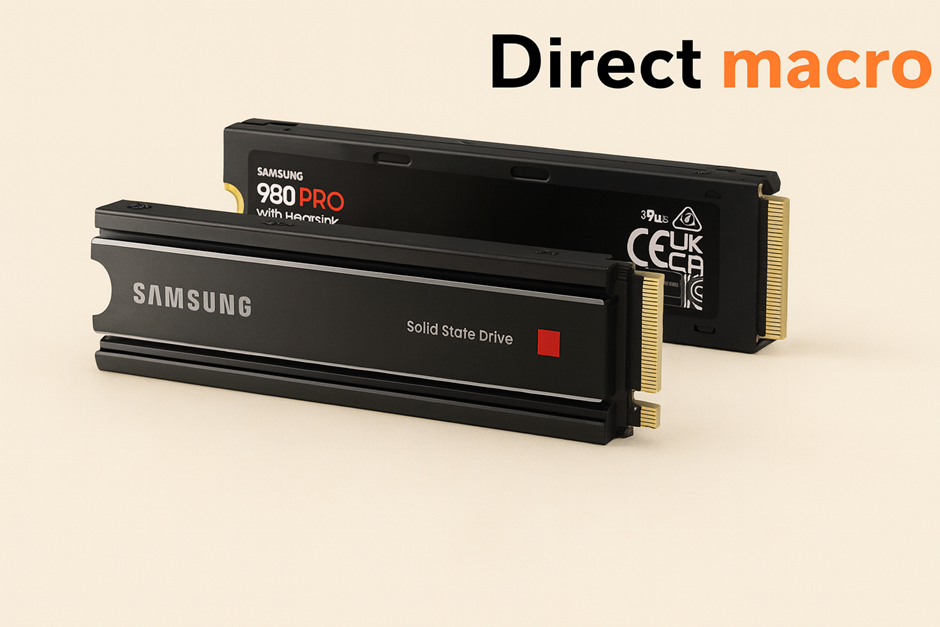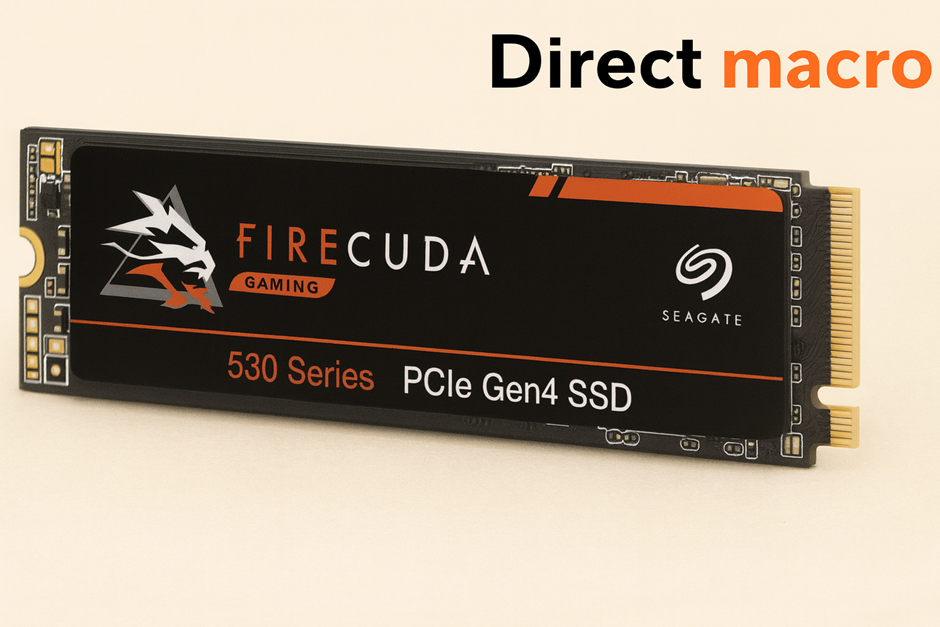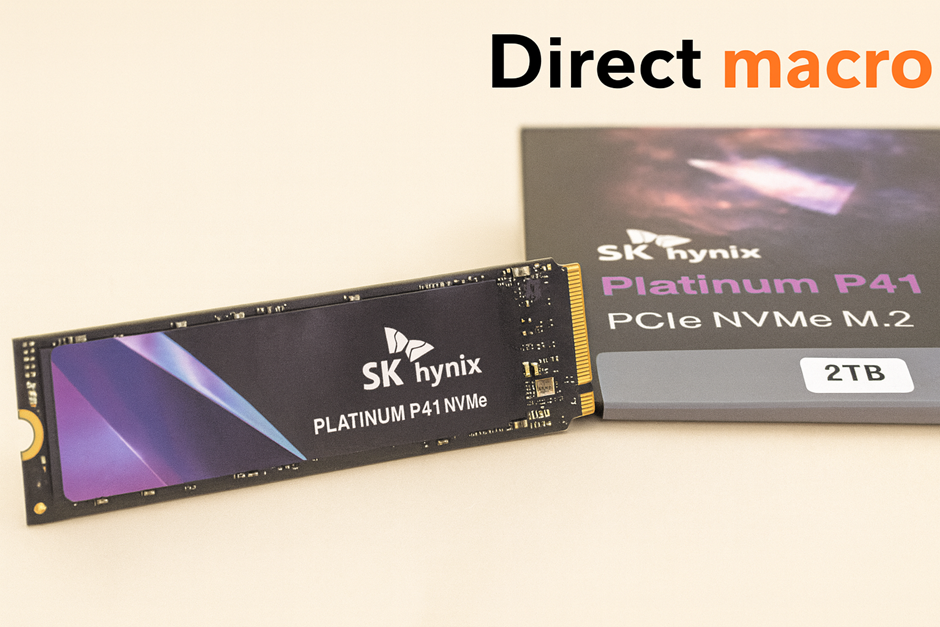Every component in your PC is vital for delivering the best gaming experience. While many focus on flashy GPUs and CPUs, the storage controller, a lesser-known part of your solid-state drive (SSD), is just as important. A high-quality storage controller allows your games to load faster and ensures texture streaming runs smoothly, making your entire PC more responsive. In this guide, we will cover everything you need to know about the best storage controllers for gaming and guide you through the complex world of SSD technology to help you make the best choice for your gaming setup.
Introduction to Storage Controllers
Every SSD has a controller, a specialized processor that manages all data operations for that SSD. It handles reading, writing, caching, error correction, and wear leveling. Think of it as the traffic cop directing data flow within your SSD. A more efficient and powerful controller can perform these tasks with greater speed and accuracy because it directly impacts your storage device’s performance. In a gaming PC, where quick data access is essential, the quality of the storage controller is both critical and non-negotiable.
Why the Right Storage Controller Matters for Gaming?
The advantages of an advanced storage controller are most evident for gamers. Increased responsiveness of the operating system, faster loading of levels and games, and quicker asset streaming in open-world games are all benefits of having a powerful controller. At the same time, a cheap SSD might boast good sequential read and write speeds. A lower quality controller can lead to inconsistencies in accuracy during read/write tasks, an area where random operations are crucial, especially for gaming purposes. The elite and best storage controllers for gaming focus on low latency and high random IOPS, which are far more indicative of real-world gaming performance than raw sequential throughput.
Key Technologies and Comparisons
Understanding the underlying technologies is essential when evaluating the best storage controllers for gaming. Let’s dive deep into the key technologies and compare the best gaming storage controllers through comparison tables and discussions.
1. PCIe 4.0 vs PCIe 5.0 Controllers – Which Is Right for You?
When discussing system performance, the interface between your SSD and motherboard significantly impacts your system’s speed. PCIe 4.0 NVMe SSDs come with high-performance gaming standards and offer sequential speeds up to 7000 MB/s. On the other hand, the PCIe 5.0 controllers offer incredible raw throughputs for the most recent gaming scenarios as compared to PCIe 4.0 drives. Games aren’t yet optimized to make full use of such high speeds, so great PCIe 4.0 SSDs with strong high-speed SSD controllers are still very competitive. PCIe 5.0 is the clear next step for people who want future-proof storage controllers.
Comparison Table:
2. Phison E18 vs Samsung Elpis: Flagship Contenders
The Phison E18 vs Samsung Elpis debate often takes center stage when we discuss flagship PCIe 4.0 controllers. Let’s find out which one is better for your system.
- Phison E18 Storage Controller
Phison E18 is a powerhouse and widely used in high-performance NVMe SSDs from third-party manufacturers. It boasts excellent random and sequential performance, making it a favorite among enthusiasts. Drives featuring E18 often have high sustained write speed and performance due to efficient thermal management and strong firmware.
- Samsung Elpis Storage Controller
Samsung Elpis storage controller powers their acclaimed 980 Pro and 990 Pro series. It is renowned for its excellent efficiency, low power consumption, and peak-optimized performance across multiple workloads, including gaming. Samsung’s vertical integration is designed for both the controller and NAND flash, which allows fine-tuned optimization.
Both are considered the best NVMe controllers for PCIe 4.0 and are great for real-world gaming and top-tier performance.
Comparison Table:
3. Best NVMe Controller: A Deeper Dive
Beyond specific controllers’ models like the E18 or the Elpis, the “best” NVMe controller will depend on its ability to manage NAND flash memory efficiency and minimize the relevant latencies. Give preference to controllers with more NAND high-speed interfaces and more than the usual 8 channels. Advanced error correction codes (ECC) are also very important for the overall data integrity and drive longevity. The firmware running on the controller plays an important role, as it dictates how data is managed, cached, and optimized.
4. Low-Latency Storage Controllers: The Responsiveness Factor
In gaming, low-latency storage controllers are more critical than peak sequential speeds. Latency is the time between a request and the moment the data starts transferring. In gaming, low latency yields instantaneous texture pop-in and fast level transitions, and overall snappy responsiveness. Controllers that excel in handling small, random read/write operations with minimal delay offer a noticeable advantage in fluid gameplay.
5. High-Speed SSD Controllers: Beyond Sequential Speeds
Sequential read and write speeds of up to 7000MB/s are great for marketing; however, random read and write IOPS (Input/output operations per second) are far more important for gaming. Mostly games have typically accessed many small files, which are stored across the drive which making random performance paramount. The best storage controllers for gaming excel in random IOPS to ensure that the system can easily access the large number of game assets needed for a smooth gaming experience.
6. Best DRAM Cache SSD Controllers: The Importance of Cache
DRAM cache (or a separate DRAM chip on the SSD) is a fast buffer for the controller that holds mapping tables and data that is often accessed. This makes random read and write operations a lot faster, which is very important for gaming. Some budget-oriented SSDs use Host Memory Buffer (HMB) technology, which uses a small amount of your system’s RAM as a cache. However, dedicated DRAM cache usually gives better and more consistent performance. So, if you want a high-performance gaming PC that works well, you should focus on the best DRAM cache SSD controllers.
7. SSD Controllers for Fast Game Loading: What to Look For
To ensure SSD controllers for fast game loading, consider the following key points:
- High Random Read IOPS: This is the most important metric for loading game assets.
- Efficient Error Correction: This keeps the data safe and stops performance degradation over time.
- Strong Thermal Management: It prevents the controller from slowing down performance under heavy load, especially during long gaming sessions.
- PCIe Gen4/Gen5 Interface: It provides the bandwidth you need for modern games and makes sure your system will be suitable for future games.
How to Choose a Storage Controller for Gaming?
When choosing the best storage controller for gaming, you need to look at the whole picture. Don’t just look at the controller model on its own; consider it as part of a whole SSD package. Here is a simple step to help you choose a storage controller for gaming:
- Determine your Budget: High-end controllers come with premium SSDs. Before making a purchase, set your budget limit on how much you can spend.
- PCIe Generation: If you are building something new, make sure it has at least PCIe 4.0. Gen5 drives are a good choice if your motherboard is compatible with PCIe 5.0 and you are looking for a future-proof drive.
- DRAM Cache: Always choose SSDs with a dedicated DRAM cache for steady performance.
- Reputable Brands: Stick to recognized SSD manufacturers that are well-known and trusted because they usually use reliable controllers and keep their firmware up to date.
- Read Reviews: Don’t just look for benchmarks that show sequential speeds; also look for ones that specifically test random read/write speeds and loading times for real games.
Best Budget SSD Controller for Gaming
When looking for the best budget SSD controller for gaming, you’ll often find drives with controllers like the Silicon Motion SM2262EN (PCIe 3.0) or newer DRAM-less PCIe 4.0 controllers that support Host Memory Buffer (HMB), like the Silicon Motion SM2269XT or controllers from Maxio. These drives may not be able to reach the highest speeds of premium drives, but they are much cheaper and offer significant performance improvement over SATA SSDs and regular hard drives. Even in the budget range, look for drives that use TLC NAND because QLC can have noticeable performance dips under sustained heavy writes.
Our Top Selling Products – Direct Macro
Here are some of the best-selling SSDs right now. They are known for their great storage controllers. We provide insights into their specifications, reasons to buy, and reasons to avoid.
1. WD Black SN850X Controller
The WD Black SN850X is a new version of the highly praised SN850. It comes with Western Digital’s in-house WD Black G2 (20-82-20035-B2) controller. It has a dedicated DDR4 DRAM cache and uses Kioxia BiCS5 112-layer TLC NAND.
- Specifications:
- Interface: PCIe Gen4 x4 NVMe 1.4
- Sequential Read: Up to 7,300 MB/s
- Sequential Write: Up to 6,600 MB/s
- Random Read (4KB, QD32): Up to 1,200K IOPS
- Random Write (4KB, QD32): Up to 1,100K IOPS
- NAND: Kioxia BiCS5 112-layer TLC
- DRAM Cache: Yes (DDR4)
- Reason to Buy: This is one of the fastest PCIe 4.0 drives on the market, making it great for gaming and other demanding tasks. It has great random read and write speeds that are important for loading games. Its updated firmware and controller provide sustained performance.
- Reason to Avoid: It might cost more than some other PCIe 4.0 options. While its speeds are top-tier for Gen4, it’s still Gen4, not Gen5.
2. Samsung 980 Pro Controller

The Samsung 980 Pro utilizes Samsung’s proprietary Samsung Elpis (S4LV003) controller and their V-NAND TLC flash. It was one of the pioneering PCIe 4.0 drives that set new performance benchmarks.
- Specifications:
- Interface: PCIe Gen4 x4 NVMe 1.3
- Sequential Read: Up to 7,000 MB/s
- Sequential Write: Up to 5,100 MB/s
- Random Read (4KB, QD32): Up to 1,000K IOPS
- Random Write (4KB, QD32): Up to 1,000K IOPS
- NAND: Samsung V-NAND 128-layer TLC
- DRAM Cache: Yes (LPDDR4)
- Reason to Buy: Renowned for its consistent performance, excellent efficiency, and rock-solid reliability. A strong contender for the best NVMe controller in the PCIe 4.0 generation, especially when paired with Samsung’s own NAND. Great for sustained heavy workloads and gaming.
- Reason to Avoid: While still excellent, it has been surpassed in peak sequential speeds by newer PCIe 4.0 drives like the SN850X. The newer 990 Pro offers marginal improvements for a higher price.
3. Seagate FireCuda 530 Controller

The Seagate FireCuda 530 is a popular choice among gamers and content creators, often featuring the Phison E18 controller (specifically, a customized version for Seagate) paired with Micron’s 176-layer TLC NAND.
- Specifications:
- Interface: PCIe Gen4 x4 NVMe 1.4
- Sequential Read: Up to 7,300 MB/s
- Sequential Write: Up to 6,900 MB/s
- Random Read (4KB, QD32): Up to 1,000K IOPS
- Random Write (4KB, QD32): Up to 1,000K IOPS
- NAND: Micron 176-layer TLC
- DRAM Cache: Yes (DDR4)
- Reason to Buy: Offers exceptional performance across the board, matching or exceeding competitors in many benchmarks. Its high endurance rating and optional heatsink make it a robust choice for heavy gaming and workstation use. The Phison E18 controller ensures top-tier performance.
- Reason to Avoid: Can be pricey, similar to other premium PCIe 4.0 drives. Without a heatsink, it might experience thermal throttling under extremely prolonged heavy loads in poorly ventilated cases.
4. SK Hynix Platinum P41 Controller

The SK Hynix Platinum P41 features SK Hynix’s in-house Aries controller and its 176-layer 3D TLC NAND. It’s lauded for its impressive performance and excellent power efficiency.
- Specifications:
- Interface: PCIe Gen4 x4 NVMe 1.4
- Sequential Read: Up to 7,000 MB/s
- Sequential Write: Up to 6,500 MB/s
- Random Read (4KB, QD32): Up to 1,400K IOPS
- Random Write (4KB, QD32): Up to 1,300K IOPS
- NAND: SK Hynix 176-layer 3D TLC
- DRAM Cache: Yes
- Reason to Buy: Outstanding random performance, often leading its class in specific benchmarks, making it ideal for SSD controllers for fast game loading. Excellent power efficiency translates to less heat and potentially better sustained performance in laptops or compact builds. A strong contender for the best DRAM cache SSD controllers list.
- Reason to Avoid: Not as widely available as Samsung or WD drives, and pricing can fluctuate.
5. Micron 2400 Controller

The Micron 2400 is a more budget-focused drive, often found in OEM systems. It features the Silicon Motion SM2269XT controller and Micron’s 176-layer QLC NAND. Notably, this controller is DRAM-less, relying on Host Memory Buffer (HMB).
- Specifications:
- Interface: PCIe Gen4 x4 NVMe 1.4
- Sequential Read: Up to 4,500 MB/s
- Sequential Write: Up to 4,000 MB/s
- Random Read (4KB): Up to 650K IOPS
- Random Write (4KB): Up to 700K IOPS
- NAND: Micron 176-layer QLC
- DRAM Cache: No (uses HMB)
- Reason to Buy: A decent budget-friendly PCIe 4.0 option, especially for casual gaming or as a secondary storage drive. Its compact M.2 2230 form factor is excellent for small form factor PCs and laptops. It represents a good value for the price for general use.
- Reason to Avoid: As a DRAM-less QLC drive, its sustained write performance can suffer significantly after its SLC cache is exhausted, making it less ideal for transferring very large files repeatedly. Not the best storage controllers for gaming if you demand absolute top-tier performance for competitive gaming.
6. Innogrit IG5236 for Gaming

The Innogrit IG5236 (codenamed “Rainier”) is a competent PCIe 4.0 controller found in several enthusiast-grade SSDs from various brands like Adata (XPG Gammix S70) and Patriot (Viper VP4300).
- Specifications:
- Interface: PCIe Gen4 x4 NVMe 1.4
- Sequential Read: Up to 7,400 MB/s
- Sequential Write: Up to 6,800 MB/s
- Random Read (4KB, QD32): Up to 1,200K IOPS
- Random Write (4KB, QD32): Up to 1,200K IOPS
- NAND: Compatible with various TLC and QLC NAND (e.g., Micron, YMTC)
- DRAM Cache: Yes
- Reason to Buy: Offers highly competitive performance, often matching or exceeding the Phison E18 vs Samsung Elpis in real-world scenarios. Known for its strong random read/write performance, making SSDs with Innogrit IG5236 for gaming an excellent choice for fast game loading.
- Reason to Avoid: Thermal performance can vary depending on the SSD manufacturer’s implementation (heatsink design). Some early implementations had firmware quirks, but these are generally resolved.
Direct macro is the most trusted platform to buy your following product. Don’t miss the chance to get a significant discount on your next purchase. For support, call us at (855) 483-7810 or visit the Direct Macro store for high-quality product details and bulk purchase information.
Future-Proof Storage Controllers
Investing in PCIe 5.0 is the only way to ensure future-proof storage controllers. PCIe 5 controllers, like the Phison E26, are currently more expensive and nascent. However, they are designed to deliver unmatched speeds. PCIe 5.0 is becoming more relevant as games start to use technologies such as Microsoft Direct Storage (which relies upon high-bandwidth and low-latency storage). PCIe 5.0 SSDs are the best way to prepare for the next generation of gaming storage demands. However, the benefits you get from PCIe 4.0 SSDs for current games are limited.
Final Thoughts
The best storage controllers for gaming are those that balance speed, responsiveness, and value. The Phison E18, Samsung Elpis dominate the high-performance PCIe-4.0 controller segment. However, the newer PCIe-5.0 controllers have emerged as the ultimate future-proof storage controllers. Prioritize drives that have low-latency storage controllers and excellent random IOPS and dedicated DRAM cache for optimal gaming performance. A storage solution that is tailored to your gaming budget and needs will enhance your PC gaming experience.
FAQs
Q1: Is a PCIe 5.0 SSD necessary for current gaming?
A high-quality controller (like the Phison E18 or Samsung Elpis) and a top-tier PCIe 4.0 SSD are more than enough for current gaming. They work great and provide excellent performance. PCIe 5.0 has faster theoretical speeds, but most games aren’t yet optimized to fully utilize this bandwidth. The real-world gaming benefit of a premium PCIe 4.0 drive is often negligible right now. However, for future-proofing your system, a PCIe 5.0 drive is the next logical step.
Q2: How much does the SSD controller impact game loading times compared to other components?
The SSD controller plays a crucial role in game loading times, especially when it comes to how quickly it can handle small, random data requests (measured in IOPS). Your CPU and RAM also play a role, but a slow or inefficient controller can slow down even the fastest CPU, which can cause longer load times and stuttering. A high-quality controller with low latency and high random read performance is crucial for snappy game loading and smooth asset streaming.
Q3: Is a DRAM-less SSD acceptable for a gaming PC?
It is generally recommended to choose an SSD with dedicated DRAM cache for a primary gaming drive. DRAM-less SSDs rely on Host Memory Buffer (HMB), which uses a portion of your system’s RAM as a cache. On the other hand, HMB can provide decent performance for everyday tasks, but it often leads to less consistent performance and slower sustained write speeds, especially when the drive is in use. A dedicated DRAM cache is the best storage controller for gaming because it focuses on consistent and high performance.
